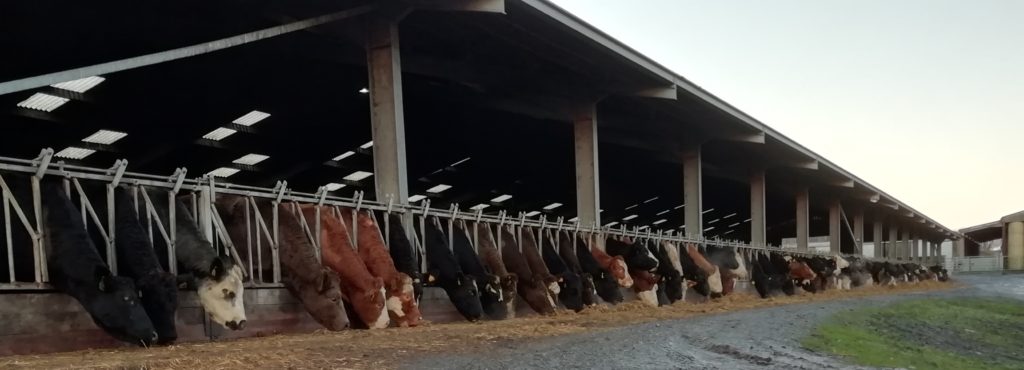Preparations Ahead of Housing Cattle
14 October 2022It is that time of year again when thoughts turn to pre-housing. While farmers are considering weaning options and pre housing vaccinations it is important not to forget the basics when preparing sheds for cattle coming inside. Here are some key things to be thinking about.
- Make sure water troughs have been cleaned out thoroughly – clean out water troughs to ensure that stale and dirty water (possibly that has sat in the trough since cattle were turned out to grass) is not left sitting in troughs. Contaminated water (from faeces, feed dropped into troughs by cattle and other organic material) will reduce intakes as stock are likely to be put off by the taste and smell. Ensuring and managing water quality is not only important for intakes but to remove bacteria, as diseases such as Leptospirosis, Johne’s and E coli all can be spread by water contamination. For more info on the importance of clean water for livestock see https://www.fas.scot/article/keeping-water-clean-for-livestock/
- Check that water troughs are working effectively and are not leaking – the obvious reason for this is to ensure cattle have access to a sufficient supply of drinking water when housed. However, it is also important for managing and reducing the usage of straw bedding. For more info on reducing straw wastage see https://www.fas.scot/downloads/managing-and-reducing-straw-usage/
- Feed passes and troughs have all be cleared and clean – As with ensuring water troughs are clean make sure that feeding areas are cleared of old, potentially mouldy feed or silage which can harbour potentially harmful moulds and bacteria.
- Check and clean all ventilation inlets and outlets, making sure they are not blocked – make sure buildings are as well ventilated as possible will help reduce the risk of pneumonia and improve cattle health. Good ventilation will eliminate damp air within the shed, which helps to keep the bedding dry, again contributing towards minimising straw bedding wastage. For more info on shed ventilation refer to https://www.fas.scot/downloads/technical-note-tn689-cattle-housing-ventilation/ https://www.fas.scot/environment/climate-change/optimising-livestock-productivity/livestock-productivity-beef/housing/
- Disinfect sheds / pens – disinfecting sheds helps to eliminate diseases present in housing. Most importantly calving sheds / pens should be disinfected between batches of calves being born to reduce the risk of calf scours. For more information on reducing calf scour and the importance of hygiene please refer to https://www.fas.scot/article/preventing-scour-in-calves/
- Repairs to internal gates, feed barriers and self-locking yokes etc. – Common sense, yes but making sure repairs have been carried before housing could be the difference between preventing accident and or injury to humans or animals when stock are housed again. These sorts of repairs are often forgotten about when the shed is not in use over the summer months.
- Cameras – For those of you using a camera in your calving shed don’t forget to check it is working properly and make sure the lens is clean. For more info on the use of cameras in livestock sheds see https://www.fas.scot/downloads/livestock-monitoring-cameras/
Related FAS Materials:
https://www.fas.scot/livestock/cattle-housing-resources/
Sign up to the FAS newsletter
Receive updates on news, events and publications from Scotland’s Farm Advisory Service

